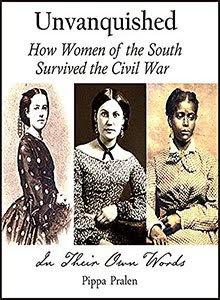The following is an Excerpt from the book "Unvanquished: How Confederate Women Survived the Civil War" by Pippa Pralen
A Pot of Gold
Many a Southerner family buried their jewels, silver and gold coins
in the ground. Martha Richardson was a
slave girl in Columbia, South Carolina.
Martha and her brothers
were working in the fields. As they
chopped, her older brother’s shovel hit something hard. He dug more and saw it was the lid of a pot. Martha describes what happened:
“It was no sooner out than we takes off de lid and we is sho’ surprised at
what we see*
Big silver dollars lay all over de top.
We takes two of them and drops them
together and they ring just lak we hear them ring on de counters. Then we
grabble in de pot for more.
De silver went down about two inches deep. Twenty
dollar gold pieces run down for about four inches or so and de whole bottom was
full of big bundles of twenty dollar greenbacks.”
They quickly return
to their family cabin to show the pot to their Mother, who begins to empty it. She first tells the children to watch the
door and see that no one enters.
She counts the coins
and tells them the money amounts to $5,700.
She asks them to swear to tell no one about their find.
Many Southerners buried
family wealth and died in battle, never to return to unearth it.
Martha’s family
continued to work and later became sharecroppers. With the newly found wealth, Martha’s Mother bought
2 lots of land and built a house for the family and a cottage she rented out. Martha was eternally grateful for this money which
allowed her family to escape from debt
and to find some relief from their hard toil.











